Midwest Travel Destinations
Midwest Vacations
The Midwest region of the United States offers unique variety of travel destinations, each with its own unique charm. Whether you're drawn to the picturesque beauty of the Great Lakes, the tranquil countryside dotted with charming small towns, or the vibrant cultural scenes of bustling cities, the Midwest has an ideal destination waiting for you. From the charming streets of Chicago to the historic landmarks of St. Louis, and the natural wonders of the Badlands and the Ozarks, let's explore the tourist destinations that retirees prefer the most in the Midwest to inspire your next vacation.
Branson, Missouri:

Photo by Cheri Alguire / Adobe Stock |
Nestled in the picturesque Ozark Mountains, Branson is celebrated as the "Live Music Show Capital of the World," captivating visitors with its vibrant entertainment scene. From country to bluegrass and gospel, this charming town offers an array of performances to suit every musical taste. Just a short and scenic 15-minute drive from Branson, you'll discover the breathtaking Table Rock Lake.
|
| As you journey through the enchanting Ozark Mountains, anticipation builds for the moment you arrive at the lake, where crystal-clear waters and stunning shorelines await, inviting you to indulge in boating, fishing, and swimming activities that will leave you refreshed and captivated. |
Chicago, Illinois:
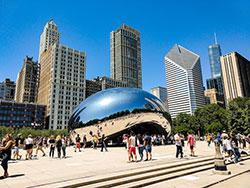
Photo by Conner Freeman / Unsplash |
Visit the Art Institute of Chicago is one of the largest and most famous art museums in the United States. It houses a collection of over 300,000 works of art, including paintings, sculptures, and artifacts from around the world. Take aboat tour of Lake Michigan is a great way to see Chicago's skyline from a different perspective. There are a number of different tours available, ranging from short cruises to longer sightseeing tours.
|
| Walk or Bike along the Chicago Riverwalk, a 1.2-mile long pedestrian and bicycle path that runs along the Chicago River. Visit Millennium Park, a home to a number of popular attractions. Attend a Cubs game at Wrigley Field, a historic baseball stadium or one of the many festivals, such as the Chicago Flower > Garden Show and the Taste of Chicago. |
Kansas City, Missouri:

Photo by Jotoya / Pixabay | Kansas City, a city steeped in musical history, offers an exciting blend of jazz, blues, and country-western influences. Kansas City is also renowned for its mouthwatering barbecue. Savor the tantalizing flavors of slow-cooked meats and tangy sauces that have made the city a culinary destination.
|
| Get swept away by the lively rhythm of this city by exploring the iconic 18th and Vine District, a cultural hub where the spirit of jazz comes alive. Visit the acclaimed American Jazz Museum, and explore exhibits that showcase the evolution jazz. As you wander through the city, you'll discover a thriving arts and cultural scene, with an abundance of galleries, theaters, and museums to explore. Take a stroll through the picturesque Country Club Plaza, an outdoor shopping district with Spanish-inspired architecture and beautifully landscaped plazas. If you're a fan of history and architecture, make sure to visit the majestic Union Station, a historic landmark that now serves as a hub for entertainment, dining, and exhibitions.
|
Mackinac Island, Michigan:
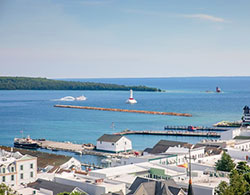
Photo by Selena Parker / Unsplash |
Mackinac Island is a charming and picturesque destination that is known for its preserved Victorian architecture, horse-drawn carriages, and absence of motor vehicles, the island takes you back in time. A must-visit attraction is the iconic Mackinac Island State Park, where you can explore beautiful trails, visit historic forts like Fort Mackinac, and enjoy breathtaking views of Lake Huron.
|
| Take a leisurely stroll down Main Street, lined with quaint shops, boutiques, and delicious fudge stores. For nature enthusiasts, a bike ride around the island's perimeter offers scenic vistas and glimpses of the famous Arch Rock. With its rich history, stunning natural beauty, and old-world charm, Mackinac Island offers a delightful and memorable experience. |
Cleveland, Ohio:
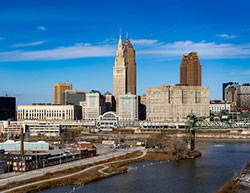
Photo by DJ Johnson / Unsplash | Cleveland offers a wealth of attractions and amenities. Art enthusiasts can explore the world-class Cleveland Museum of Art, with its extensive collection spanning ancient to modern works. Music lovers can experience the renowned Cleveland Orchestra, performing in the acoustically perfect Severance Hall.
|
| For rock and roll aficionados, the iconic Rock and Roll Hall of Fame and Museum is a must-visit, showcasing the genre's history and cultural impact. The Great Lakes Science Center offers a fascinating journey through natural phenomena, while the Cleveland Metroparks provide ample opportunities for outdoor activities in their 21 interconnected parks.
|
Best Time to Visit:
Both Spring (March to May) and Fall (September to November) months offer pleasant weather and fewer crowds in the Midwest region of the United States. Keep in mind that specific events, festivals, and regional weather variations can impact the best time to visit certain areas in the Midwest.
Spring (March to May):
Spring is an excellent time to visit the Midwest as the weather starts to warm up, and the tourist crowds are relatively smaller compared to the summer months. You can enjoy mild temperatures and blooming landscapes. The average temperature ranges between 40°F to 70°F (4°C to 21°C). This season is particularly ideal for exploring cities like Chicago, Minneapolis, and St. Louis, as well as regions like the Great Lakes and the picturesque countryside.
Summer (June to August):
Summer is peak tourist season in the Midwest due to its sunny weather and outdoor activities. Coastal regions along the Great Lakes, such as Michigan and Wisconsin, are popular destinations for beachgoers and water sports enthusiasts. However, be prepared for higher temperatures and occasional humidity, especially in southern parts of the region. The average Summer temperature ranges between 70°F to 90°F (21°C to 32°C). If you visit during this season, consider visiting national parks, enjoying lake activities, or exploring vibrant cities like Detroit and Indianapolis.
Fall (September to November):
Autumn is another excellent time to visit the Midwest, with mild temperatures and beautiful foliage. The weather remains pleasant, making it ideal for outdoor activities and exploring nature. The average Fall temperature ranges between 40°F to 70°F (4°C to 21°C). Fall is a fantastic time to visit regions like Michigan's Upper Peninsula, Minnesota's North Shore, and the scenic landscapes of Missouri and Iowa.
Winter (December to February):
Winter in the Midwest can be cold and snowy, especially in northern states like Minnesota and Wisconsin. However, southern parts of the region, including Illinois and Ohio, tend to have milder winters with occasional snowfall. The average Winter temperature ranges between 20°F to 40°F (-7°C to 4°C). Winter is a great time to visit cities like Chicago, Minneapolis, and Milwaukee, where you can explore indoor attractions, enjoy winter festivals, and engage in winter sports activities like ice skating or skiing in nearby resorts.
Travel Planning Tips:
Plan Ahead: Research and plan your itinerary in advance to make the most of your time in the Midwest. Consider the locations you want to visit, the duration of your stay, and any specific attractions or activities you don't want to miss. The Midwest is known for its diverse range of destinations, including cities like Chicago, Minneapolis, and St. Louis, as well as natural wonders like the Great Lakes, national parks, and scenic countryside.
Cash and Currency: In the Midwest, the United States Dollar (USD) is the official currency. Make sure to have some cash on hand for small expenses, as well as credit cards, which are widely accepted in most places..
Language, Local Customs and Etiquette: English is the primary language spoken throughout the Midwest. However, being respectful of local customs and etiquette is always appreciated. Embrace the Midwest's friendly and welcoming culture, and be mindful of local traditions and customs. It's always a good idea to be polite and considerate towards locals.
Stay Hydration:The Midwest experiences a range of climates, but during the summer months, it can get hot and humid. It's important to drink plenty of fluids and carry a water bottle with you to stay hydrated, especially if you're engaged in outdoor activities.
Sun Protection:The Midwest enjoys plenty of sunshine, so it's crucial to protect yourself from the sun's rays. Wear sunscreen, a hat, and sunglasses, and seek shade during the hottest hours of the day to prevent sunburn and dehydration. This is particularly important if you're exploring national parks or spending time outdoors.
Travel Documents: If you are not a U.S. Citizen, ensure you have a valid passport or appropriate identification and documentation. If you're traveling from outside the United States, check if you require a visa to enter the country, depending on your nationality. Also, ensure you have all the necessary travel documents, such as your flight tickets and accommodation reservations.
Accommodations:
The Midwest region of the U.S. offers a wide range of accommodation options, including hotels, charming bed and breakfasts, vacation rentals, and rural guesthouses. Book in advance, especially during peak seasons, to secure the best deals and availability.
Transportation:
Considering the vast size of the Midwest and its diverse destinations, retirees have multiple transportation choices to accommodate their travel needs and explore the region comfortably. These include:
- Domestic Flights: If you're planning to travel longer distances within the Midwest, domestic flights are available from major cities. Regional airports offer connections through full-service and low-cost airlines, providing faster travel options.
- Trains: The Midwest has an efficient train network that allows for convenient travel between cities. Amtrak is the national train operator, offering services like the Amtrak Midwest and long-distance routes connecting major destinations.
- Buses: Buses are a popular mode of transportation for both short and long distances in the Midwest. Companies like Greyhound and Megabus operate intercity and regional bus services, connecting various cities and towns across the region.
- Rental Cars: Renting a car is a great option for retirees who wish to explore rural areas and smaller towns in the Midwest. It offers flexibility and convenience, but it's important to be aware of parking regulations, toll roads, and traffic rules, especially in urban centers.
- Taxis: Taxis in the Midwest are generally safe and reliable. It's recommended to use licensed taxis and avoid unmarked vehicles. Sharing your trip details with someone you trust is also a wise precaution.
- Taxi Apps: Ride-hailing apps like Uber and Lyft are widely available in major cities throughout the Midwest. They provide the convenience of booking rides, tracking their arrival, and making digital payments.
- Public Transportation:
Major cities in the Midwest have comprehensive public transportation systems, including metros, buses, and trams. Travel cards or individual tickets can be purchased depending on your planned usage, making it a convenient option for getting around within urban areas.
Safety Tips:
- Safety Precautions:
The Midwest region of the United States is generally considered safe, but it's always important to take precautions. Be aware of your surroundings, especially in crowded tourist areas, and keep an eye on your belongings to prevent theft or loss.
- Vaccinations: Before visiting the Midwest, it's recommended to check with your healthcare provider or travel clinic regarding any recommended vaccinations. Routine vaccines such as COVID-19, measles-mumps-rubella (MMR), tetanus, pertussis (DTaP), varicella (chickenpox), and flu shots are generally advised. Depending on your travel plans and personal health, additional vaccines may be recommended.
- Medical Facilities: Familiarize yourself with the location of medical facilities, clinics, and hospitals near your travel destinations in the Midwest. Keep a list of emergency contact numbers and addresses readily available in case of any medical needs.
- Prescription Medications: If you take prescription medications, ensure you have an ample supply for the duration of your trip to the Midwest. Carry them in their original packaging, along with copies of prescriptions, in case you need to refill or replace them while traveling.
- Hygiene and Food Safety: Practice good hygiene by regularly washing your hands with soap and water, or using hand sanitizer when handwashing facilities are not available.
- Sun Protection: The Midwest experiences varying levels of sun exposure, so it's important to protect yourself from the sun's rays. Wear sunscreen with a high SPF, a wide-brimmed hat, sunglasses, and lightweight clothing. Seek shade during the hottest hours of the day to avoid heatstroke and sunburn.
- Stay Hydrated: Maintain adequate hydration by drinking plenty of water, especially in warmer months or when participating in outdoor activities. Carry a refillable water bottle and stay hydrated throughout the day.
- Emergency Numbers: Familiarize yourself with the emergency contact numbers in the Midwest, including the general emergency number (911), local police, and medical services.
- Travel Advisories Stay updated on current events, local regulations, and any travel advisories when traveling abroad. Visit the US Government State Department Travel Advisories web site to check on the status of your destination.
- Enroll in the STEP Program: Travelers are also urged to enroll in the U.S. State Department's Smart Traveler Enrollment Program (STEP) to receive security messages and to make it easier to locate them in an emergency. The Department uses these security messages to convey information about terrorist threats, security incidents, planned demonstrations, natural disasters, etc. In an emergency, please contact the nearest U.S. Embassy or consulate or call the following numbers: 1 (888) 407-4747 (toll-free in the United States and Canada) or 1 (202) 501-4444 from other countries.
| |
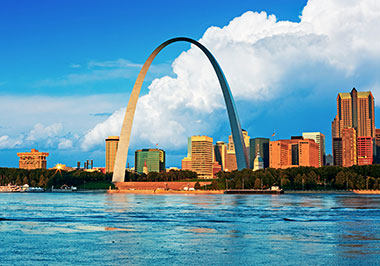 St. Louis Arch Photo by Allan / Adobe Stock
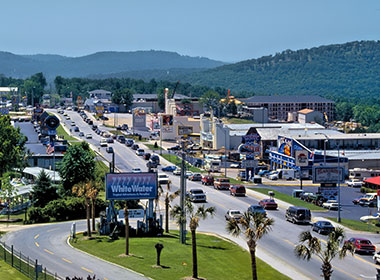 Branson, MO
Photo by John S Stewart / iStock
 Chicago's gold coast
Photo by Max Harlynking / Unsplash
 Mackinac Island, Michigan
Photo by Michael Deemer / iStock
|
 St. Louis Arch
St. Louis Arch Branson, MO
Branson, MO Chicago's gold coast
Chicago's gold coast Mackinac Island, Michigan
Mackinac Island, Michigan